#no particular reason the vibe is just resonating with this English person today
Explore tagged Tumblr posts
Text
Tunesday Tuesday
I will never give up on you
For all the times you sat and sang to me
Trying to make me better
#no particular reason the vibe is just resonating with this English person today#tunesday tuesday#fightstar
1 note
·
View note
Text
JAM’s Top 8 for 2017
I retired the concept of publication years in 2016 and that tradition holds this year. When you meet a book matters more than when the book met the world. You’re a certain sort of person when the text comes into your life and if you read it at a different time, you’d likely see it in a different way. What’s more: there’s just too much in the world for me to focus on what was published when–so this list represents the best of what I experienced in 2017, independent of its publication date. It represents me, my year, where I started, and where I ended. Hope you enjoy the ride.
8. Jackass // Scarlet Beriko (2015, tr. 2017)
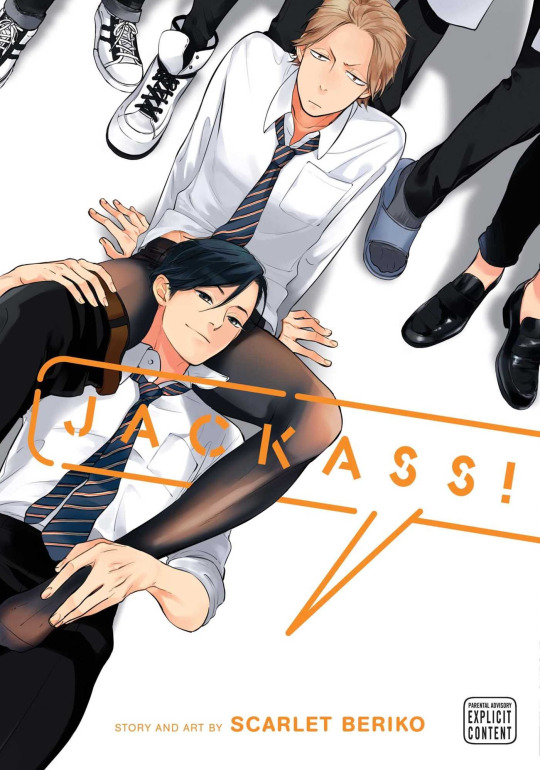
Scarlet Beriko is one of the best cartoonists in the game and their chosen field is: BL. Lucky, I think. I have always admired their variety and control of line weight, wielding it carefully to allow the tone to turn on a dime. (Their comics, including this one, are hilarious.) But with Jackass in particular,I think what I admire most is how much affection each character--even the secondary ones, the nameless ones--seems to show.
The main pairing is two high school students and best friends, Keisuke and Masayuki. Their relationship ends up in a strangely sexual place when Keisuke accidentally puts on his older sister’s pantyhose--and Masayuki discovers a kink he never knew he had. The comic is impressive enough in that the accidental putting on of pantyhose is actually believable in context, but the true mastery is how protective the boys and their friends are of one another. A secondary romance is built between Keisuke’s childhood friend, Katsumi, and the school doctor, but even this romance is less about the two characters and more a vehicle for emphasizing Keisuke and Katsumi’s friendship--which is a relief, as I generally frown upon even fictional student-teacher relationships for reasons that should be obvious. All of these boys (and, notably, Keisuke’s sister) love each other, take care of each other, treat each other preciously--the way I wish all the precious men in my life would treat each other.
The major flaw of the book comes with the character Miyoshi, another student. Even he becomes part of the flow of affection, but the character uses the word ‘queer’ pejoratively quite a few times, which is to be understood as a sort of defense mechanism given the completion of his arc--but of course, does not undo the violence of either the nature of the word’s use or its larger participation in queerphobic narratives. I very much enjoy the deep love this book shows, which is why it’s frustrating (to say that absolute least) to see it casually undermined by queerphobic language and themes.
It was one of the best books I read this year, but that enjoyment was tempered by the sharpness of that experience. If you do decide to enjoy the book yourself: please do so carefully.
7. Mix-Plate // Emily Forster (2017)
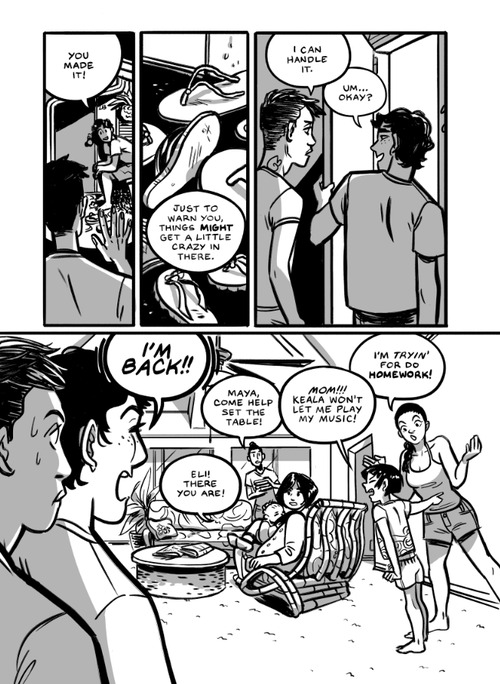
BL brought me other gifts this year, but this time from a surprising source: the West. In 2017, seven Western cartoonists put together Boy, I Love You: a BL comics anthology, a work collecting pieces inspired by and celebrating the genre. The anthology itself was enjoyable on the whole, but Emily Forster’s piece, “Mix-Plate”, was an impressive standout.
Not unlike Jackass, affection looms large throughout the story, though this one is much more familial. Jordan is a teenager whose parents don’t quite support him as they should. One day, he meets another boy named Eli who has a different relationship with his family. Jordan eats with Eli’s family on the beach several times and the family’s affection for one another is arguably the true primary relationship of the story.
The imbuing of culture and setting is also key to the story. Though it is never said directly, the comic is ostensibly set in Hawaii given Eli’s family uses Pidgin with significant frequency. This element may be the part that I liked most of all--if anything because I don’t get to read many comics that invoke elements of Hawaiian culture and daily life by cartoonists from Hawaii. The authenticity shines through as much, if not, moreso, than the romance itself.
The comic feels warm and, ultimately, welcoming. Just as a love story should.
6. Akira, vol 1 // Katsuhiro Otomo (1982, re-translated 2017)

I’ve read volume 1 of Akira three times in my life, across about five years. I’ve seen the film several times. And now, I think, Otomo and I are beginning to understand one another. Part of it is certainly that this go round I’ve been reading editions with higher production quality and significantly better translations--but I think I needed to sit with the book for a few (or several) years before it began to resonate.
Finally, after Time Number Three, I understood Kaneda’s cool, Kaneda’s foolishness, and the quiet implication of Kaneda’s tragedy--maybe because they’re all the epitome of youth, or perhaps more accurately, the epitome of lacking control. Ultimately, Akira is really a story about attempts at either control or the illusion of control. What’s cool about Kaneda is that he gets thrown into the center of a government conspiracy and simply rolls with the punches. He’s cool; he’s in control. But what’s foolish about him is even the thought that he’s in control, that he knows it all, that he’s got it figured out. You can’t have one without the other. And the tragedy is what robs him of the control in the first place, what seems to control him, what he has to settle for instead of control--which are things Otomo carefully intimates but never says outright, because..well, tragedy, isn’t cool. Kaneda is at the edge of everything because his youth and his edge are all he has. And you roll with it, just as he does, not just because that edge is cool but because you too are lacking control. You too want to roar in defiance, to make someone or something remember you, even if you can’t. It took some time, but, I got there.
I’m glad I did.
5. Navigating Trauma // Shan Murphy (2017)
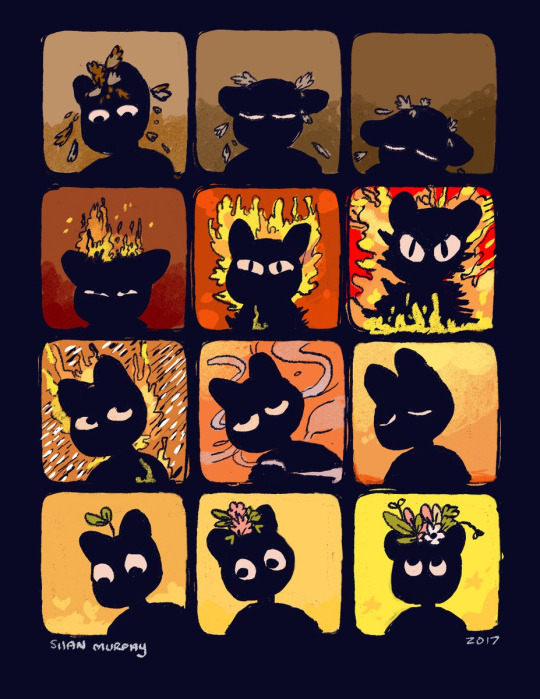
Navigating Trauma is a 2017 mood if I’ve ever seen one. I saw it go by on Twitter and was immediately staggered. I looked it several times that day. I’ve looked at it several times since. It depicts the feelings with immediately recognizable truth and honesty. It lets you know where you’ve been. It lets you know where you’ll eventually be. Though this is my first time coming across their work, Murphy’s work here is reminiscent of Tove Jansson’s Moomin strips--in both style and tone, I think. There’s a sweetness and a sharpness. Something gentle that will not lie to you about the difficult portions of life. But also something that will comfort you through them. A fantastic piece.
4. Stages of Rot // Linnea Sterte (2017)
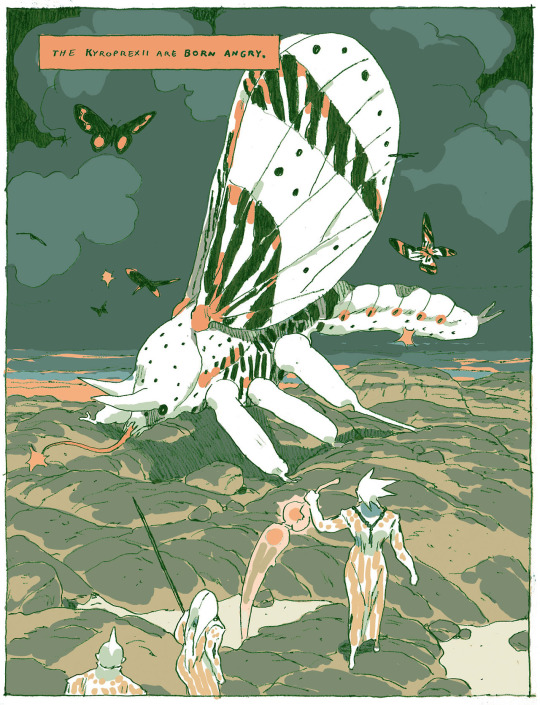
I’ve been thinking for a while about how to describe what’s good about Stages of Rot and I keep coming back to the notion of it representing the quietest, stillest, and most undisturbed parts of my heart. It’s the art, mainly. The narrative relies much less on words and much more on “vibe,” as my friend and colleague Shea Hennum is wont to put it. The story doesn’t even matter to me, all that much. I have trouble keeping it together, though the description on the back helps:
“An alien desert comes to life around the body of a dying whale. Animals, insects and ancient peoples scramble for her remains and make their homes among her bones, struggling through a millenia-long process of decay.”
As I said, though, it’s the art. The lines and colors are both, at once, soft but definitive. Any more words would ruin it because it’s the feeling--the feeling of being in tune with something across time and space. A kind of purpose and significance to the movements of the earth, and you. It’s something holy. A pure experience.
3. Shinobeba Koi // Yukue Moegi (2014)
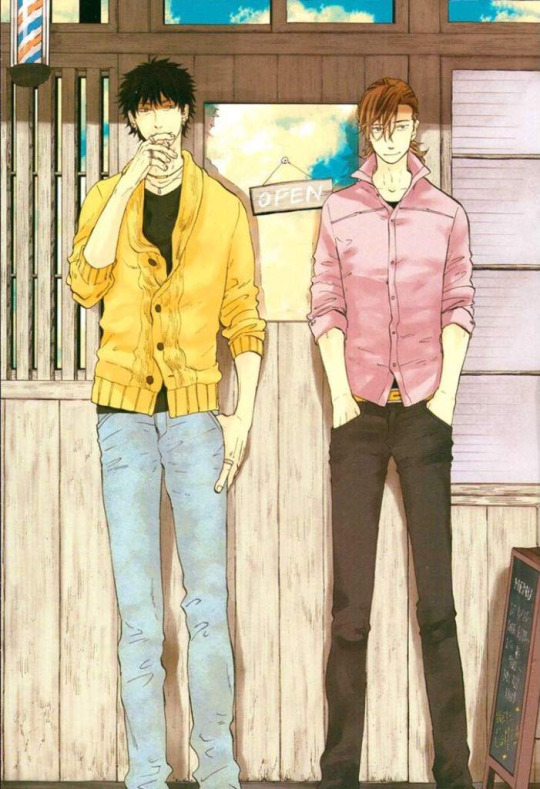
Well, it’s BL again. Sorry, not sorry. And even worse, it’s a title that hasn’t been translated to English (yet). I know, I know, but I’m even less sorry than I was previously. I’m speaking it into the universe such that some intrepid young licenser will come across this post and think, yes, today I will, because honestly, I’ve read this comic about 6 times this year and I am moved each time.
Shinobeba Koi is a two-volume comic that is actually a spin-off from a different comic, Nirameba Koi. It follows the older brother of the main character from Nirameba, but that doesn’t matter because Shinobeba is entirely enjoyable without that context (and is a definitively superior comic.) It tells the tale of a long love between Tora (the older brother) and Tetsuya. The story starts when they’re older, working at a hair salon together, but readers learn that they knew each other from before, when the two were teenagers. Tetsuya was 18, the leader of a bike gang and Tora, 16, admired him deeply, desperate to join his gang.
The depth of their feelings is apparent and holds throughout the narrative, gently but firmly. There are a number of opportunities for Moegi to overdo it, but she never does. The story is always told with restraint and deep sensitivity, which is particularly fitting against the setting of an extremely masculine bike gang. I’m continually swept away by the gentleness and the certainty of affection between the two leads, even at troublesome intersections. I love a story of a long, patient love--perhaps because patient love is the sort that I feel that I need--so this one is among my very favorite.
2. On A Sunbeam // Tillie Walden (2016-7)
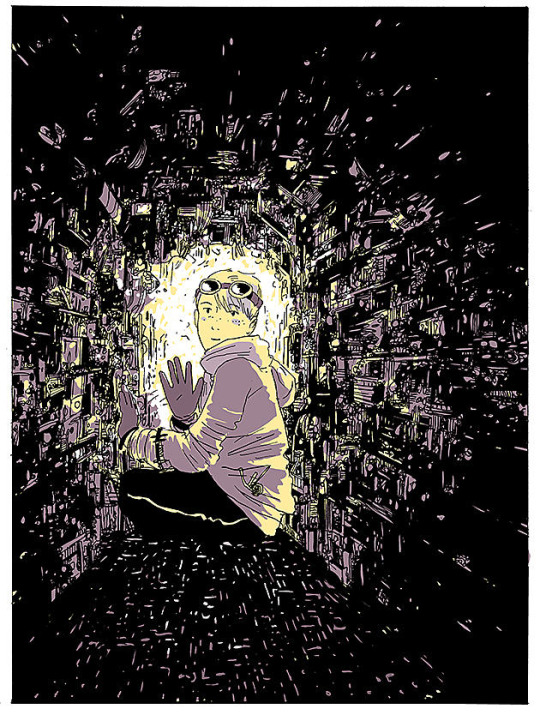
I almost put On A Sunbeam on last year’s list, but it hadn’t finished yet, and I have been burned by the floppy endings of too many otherwise brilliant works to make similar mistakes again. With that in mind, I should note how I felt reading the end of this comic.
It had been finished for a few weeks, but I was already three or four chapters behind--and I was also a bit depressed. I wasn’t interested in much, couldn’t do much, didn’t want to do much beyond feeling bad about not being able to do or wanting to do much. My friend Mark suggested that I read the final chapters of the comic, in hopes of improving my mood, but I told him I didn’t want to, since the weight of those final chapters possibly being bad (or worse, middling) seemed like too much additional sadness. And then I would never know if the comic was bad or if I was bad. And that too seemed too much.
So I waited. I waited for a day that I felt, at a minimum, okay, and then I read it. And, of course, once I did, I was ready to spin-kick the sun out of the sky. (I say that a lot for things I like, because it’s the only thing that really adequately describes how it feels when I experience something I love, so you may have heard me use the phrase before.)
I could write about the sheer industriousness of Walden’s work on this webcomic--she was putting out 20-30 pages...a week, never mind a month--or I could write about it in context of how much I love her other work, but really, I just want to say that On A Sunbeam is chockful of artfully restrained and fine feelings--of love, of fury, of warmth.
It’s a space comic that, in one timeline, follows Mia, a girl working as a part of a ship’s crew that restores various buildings for money, but then also follows her at a different time, when she’s at a new boarding school after some troubles at her old one. The work emphasizes the forced closeness of spaceships in the vast distances of space, how crews live together and become families. Use of space and architecture are probably my favorite things about Walden’s comics and On A Sunbeam is no exception. My experience of the comic was always relief, gratefulness, and joy at having such quality work available to me on a regular basis.
It’s going to be published in print in 2018, if webcomics aren’t your thing. I hope it brings you as much relief, gratitude, and joy as it brought me.
1. Finder, vol 1 // Carla Speed McNeill (1997-present, collected in 2011)

Finder is a miracle comic, I think. It behaves as though it’s real, which a lot of fictional works strive for, but rarely actually achieve. I was immediately engrossed after the first few pages and the huge library volumes collected by Dark Horse in 2011 are massive--664 pages, precisely. But it’s likely the casualness of it all, the evidence of the world building without explanation, and the compelling character (protagonist is the wrong word, in the context of Finder) we have in Jaeger, an Ascian sin-eater. If you haven’t read Finder, you don’t know what either of those words mean, but that’s fine, don’t worry--whatever I tell you about it won’t be as good as if you just pick up the book and let McNeill tell you herself. Or, I don’t know, let Finder tell you itself, as it almost seems to function on its own.
That’s part of it too. McNeill’s work is impressive such that the seams, the hand of the creator is almost, oddly, invisible (even though it could in no way happen without her, dare I say, genius.) There are many comics that I can imagine working on myself, even several of the ones by the greats (I admit, audaciously) but Finder is its own separate, brilliant thing that I could never either conceive of or create, even knowing about it after the fact.
I imagine I’m frustrating you because you’ve arrived at #1 and I haven’t even told you what the comic is about but, to be honest, I don’t know! I can’t say. Anything I’d say would be incomplete and a disservice to an undefinable truth. I can tell you that some of it is about Jaeger, but much of it isn’t. My favorite parts are about him, but there’s plenty I love that’s hardly related.
It’s a comic I can’t define with all my words and critical prowess, can’t create with all of my imagination and sense of structure, but absolutely love. It’s a world. It’s several. It’s a life, a series of lives.
And how on earth could I adequately tell you about that?
#finder#shinobeba koi#jackass#tillie walden#on a sunbeam#stages of rot#linnea sterte#shan murphy#emily forster#akira#katushiro otomo#carla speed mcneil
18 notes
·
View notes